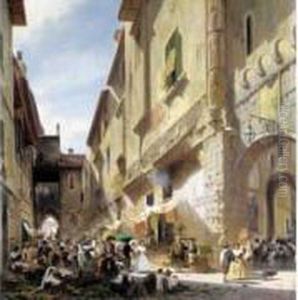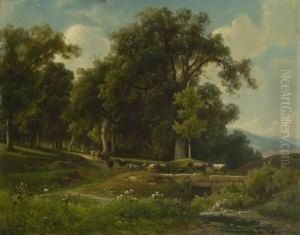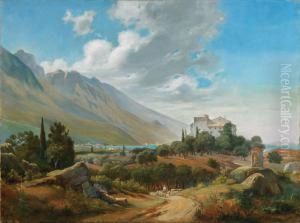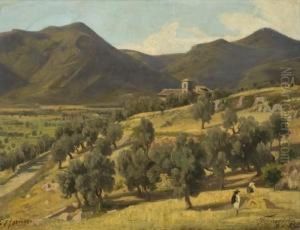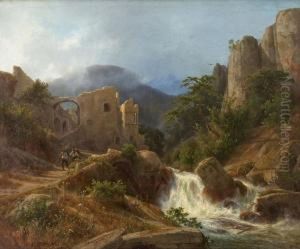Carl Johann F. Rotteken Paintings
Carl Johann Friedrich von Rotteck was a German artist, primarily known for his contributions as a history painter, portraitist, and lithographer. Born on March 18, 1797, in Freiburg im Breisgau, Germany, von Rotteck was part of the cultural milieu that emerged in the early 19th century, which was characterized by a resurgence of interest in historical and classical themes.
Von Rotteck's artistic journey began under the guidance of his father, Carl von Rotteck, who was a renowned historian and professor. This academic environment provided young Rotteck with a rich foundation in history and the classics, which later influenced his choice of subjects in painting. He pursued his art education further by studying at the Academy of Fine Arts in Munich, where he honed his skills in the neoclassical style prevalent at the time.
Throughout his career, Rotteck was primarily engaged in creating historical scenes, often illustrating moments from German and European history. His works were characterized by a strong narrative quality and an attention to historical accuracy, reflecting his academic background. In addition to history paintings, von Rotteck also produced portraits, which were well-received for their sophistication and psychological depth.
As a lithographer, von Rotteck contributed to the popularization of this medium in Germany. Lithography, a relatively new printmaking technique developed in the late 18th century, allowed for the mass production of images. Von Rotteck's lithographs helped disseminate his historical scenes to a broader audience, thus playing a role in shaping the collective historical consciousness of the period.
Despite his accomplishments, Carl Johann Friedrich von Rotteck is not as widely remembered as some of his contemporaries. However, his work remains significant for its representation of 19th-century historical painting and its influence on the visual culture of his time.
Von Rotteck's death on December 29, 1860, in his hometown of Freiburg, marked the end of a career that encapsulated the spirit of German Romanticism and neoclassicism. His legacy, preserved in his paintings and lithographs, continues to offer insights into the artistic and historical sensibilities of the 19th century.
